Great Scott! Ascots in Menswear
Ascots are one of the oldest forms of men’s neckwear still worn today. But this unique accessory has changed dramatically through the years, and how men of style utilize it has also changed. You might be wondering if ascots are even still worn today and, if so, how they are worn.
- Great Scott! Ascots in Menswear
- Ascots and Cravats Are Technically Not the Same Thing
- Defining What Exactly A Cravat Is
- A Brief History of Neckwear
- Defining What Exactly An Ascot Is
- Distinguishing Between Different Types of Neckwear
- A Brief History of the Ascot
- Distinguishing Between a Day and Formal Ascot
- How to Wear a Day Ascot
- An Example of a Day Ascot Outfit
- How to Wear a Formal Ascot
- An Example of a Formal Ascot Outfit
- Are Ascots Out of Fashion? No!
- Conclusion
- Ascot & Cravat FAQ
This guide will teach you everything you need to know to add an ascot to your outfit effortlessly, and you will even learn how to style an ascot both for formal and casual occasions. Once and for all, you will also learn the difference between an ascot and a cravat.
Ascots and Cravats Are Technically Not the Same Thing
Considerable confusion exists regarding the terms “ascot” and cravat.” In some languages and dialects, they can refer to the same article, while in other languages and dialects, they refer to different articles.
To be most precise, however, there is a North American definitive definition for both.
An ascot, also called an ascot tie, is a neckband that consists of two wings of wide, pointed fabric, usually of the same size, with a connecting strip.
A cravat is any cloth tied around the neck for decorative purposes and can therefore encompass neckties, bow ties, scarves, and even ascots. It is, essentially, an umbrella term for any decorative article worn about the neck.
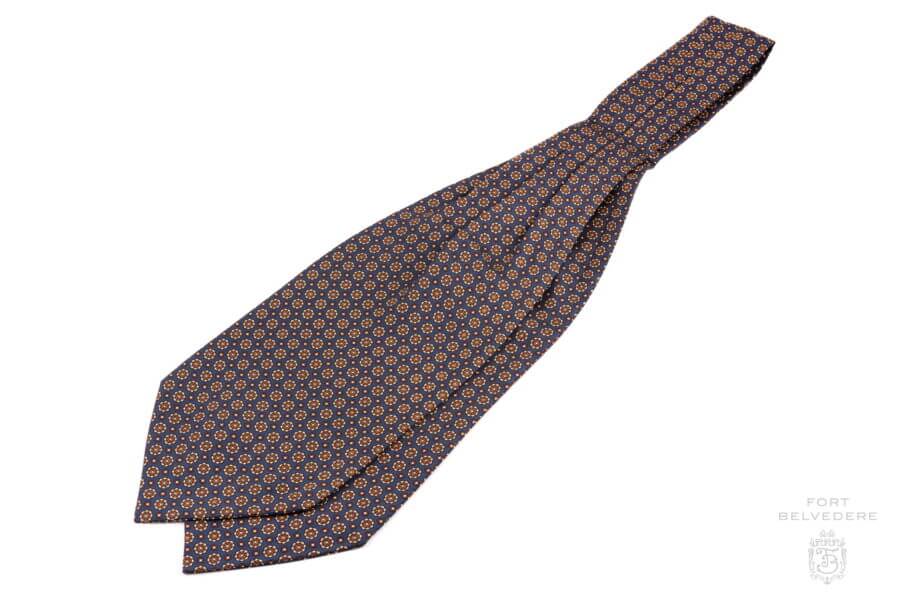
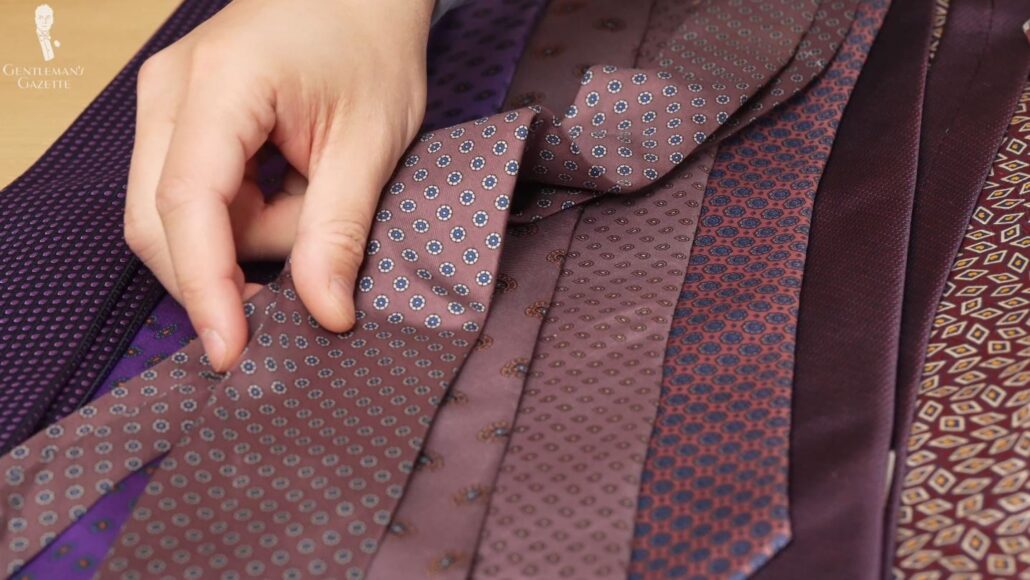
Having learned these textbook definitions, however, it is important to note that the use of the term will vary greatly from region to region. Therefore, be prepared for local usage which might be different from your own and even deviate from the standard accepted definition. In the United Kingdom, for instance, the term “cravat” is often used in place of the term “ascot.”
Defining What Exactly A Cravat Is
As established, a cravat is technically any cloth worn around the neck for decorative purposes. How did we arrive at this definition? And why are there so many regional variations in what cravat means? To understand this reality, we must first go back in time to briefly recount the history of neckwear.
A Brief History of Neckwear
How Croatian Mercenaries Helped Create the Word “Cravat”
![The Term Cravat Traces Its Lineage Back To The Battlefields Of 17Th Century Europe The term "cravat" traces its lineage back to the battlefields of 17th-century Europe. [Image credit Wikimedia].](https://www.gentlemansgazette.com/wp-content/uploads/2022/08/The-term-cravat-traces-its-lineage-back-to-the-battlefields-of-17th-century-Europe-1030x604.jpg)
Men have been wearing decorative cloths around their necks for millennia, likely as an evolution from neckwear garments intended to insulate and preserve body heat. The use of the word “cravat” to refer to this neckwear in the West, however, can, according to popular tradition, be traced directly to one particular source.
During the Thirty Years War, a massive conflict in Europe that spanned from 1618 to 1648, European powers jockeyed for control by employing foreign armies as mercenaries. The nation of France engaged a sizable number of Croatian mercenaries to assist its own soldiers, and the Croatian soldiers would soon become a regular sight in the French army.
“In 1660 a regiment of Croats arrived in France — a part of their singular costume excited the greatest admiration, and was immediately and generally imitated; this was a tour de cou, made (for the private soldiers) of common lace, and of muslin or silk for the officers; the ends were arranged en rosette, or ornamented with a button or tuft, which hung gracefully on the breast. This new arrangement, which confined the throat but very slightly, was at first termed a Croat, since corrupted to Cravat.”
from The Art of Tying the Cravat (1828)
These Croatian mercenaries wore a distinctive neckcloth, for which they soon became famous, and their particular style of neckwear became popular across France, especially when the young king, Louis XIV, began to wear a cravat at court around the age of seven.
Around the same time, however, Croatian soldiers were also serving with German armies, and Croatian neckwear also grew in popularity across the German states. Therefore, it is very difficult to say whether the French or the Germans adopted this style first.
Because of the national origins of this distinctive neckwear, it was known by the French word Croate, which simply means Croatian. Eventually, the word Croate was corrupted into the word with which we are familiar today, cravat.
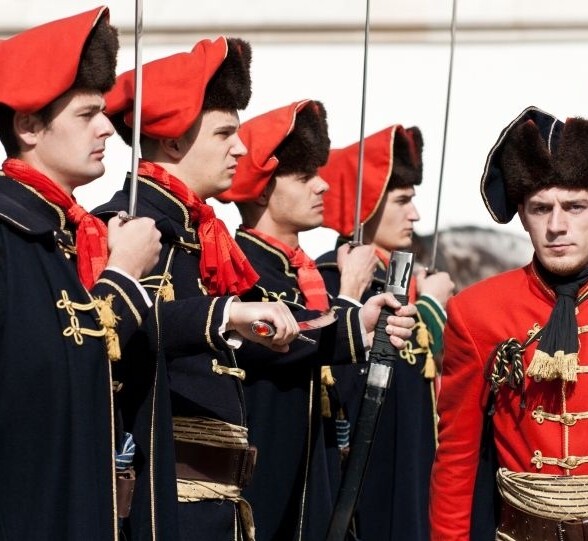
The Cravat in Croatia Today
To this day, the people of modern Croatia are very proud of the role their nation played in the development of the cravat and modern neckwear. A Croatian guard of honor, known as The Cravat Regiment, is stationed in the town of Zagreb, where they can regularly be seen drilling and changing the guard in historic military uniforms which feature their famous cravats. Croatia also celebrates Cravat Day on October 18th, commemorating the cravat as “a universal symbol of elegance and the culture of dressing.” [Image credit Wikimedia.]
How Historic Neckcloths Evolved into the Modern Necktie
It must be stressed during the 17th and 18th centuries that neckwear was a diverse and unstandardized field. Most neckwear accessories consisted of simple cloths, of various dimensions, patterns, and designs, that could be worn around the neck in a variety of ways.
These early “cravats” were not so much distinct neckwear accessories as they were a loosely associated method of wearing a cloth about one’s neck. Eventually, these neckcloths evolved into a variety of standardized types that included the jabot, the stock tie, the ascot, and the bow tie.
![Portrait Of Arthur Atherley As An Etonian C. 1791 By Thomas Lawrence. Atherley Is Shown In The White Neckcloth Often Worn By Eton Students Portrait of Arthur Atherley as an Etonian (c. 1791) by Thomas Lawrence. Atherley is shown in the white neckcloth often worn by Eton students. [Image Credit: Wikimedia]](https://www.gentlemansgazette.com/wp-content/uploads/2022/08/Portrait-of-Arthur-Atherley-as-an-Etonian-c.-1791-by-Thomas-Lawrence.-Atherley-is-shown-in-the-white-neckcloth-often-worn-by-Eton-students.jpg)
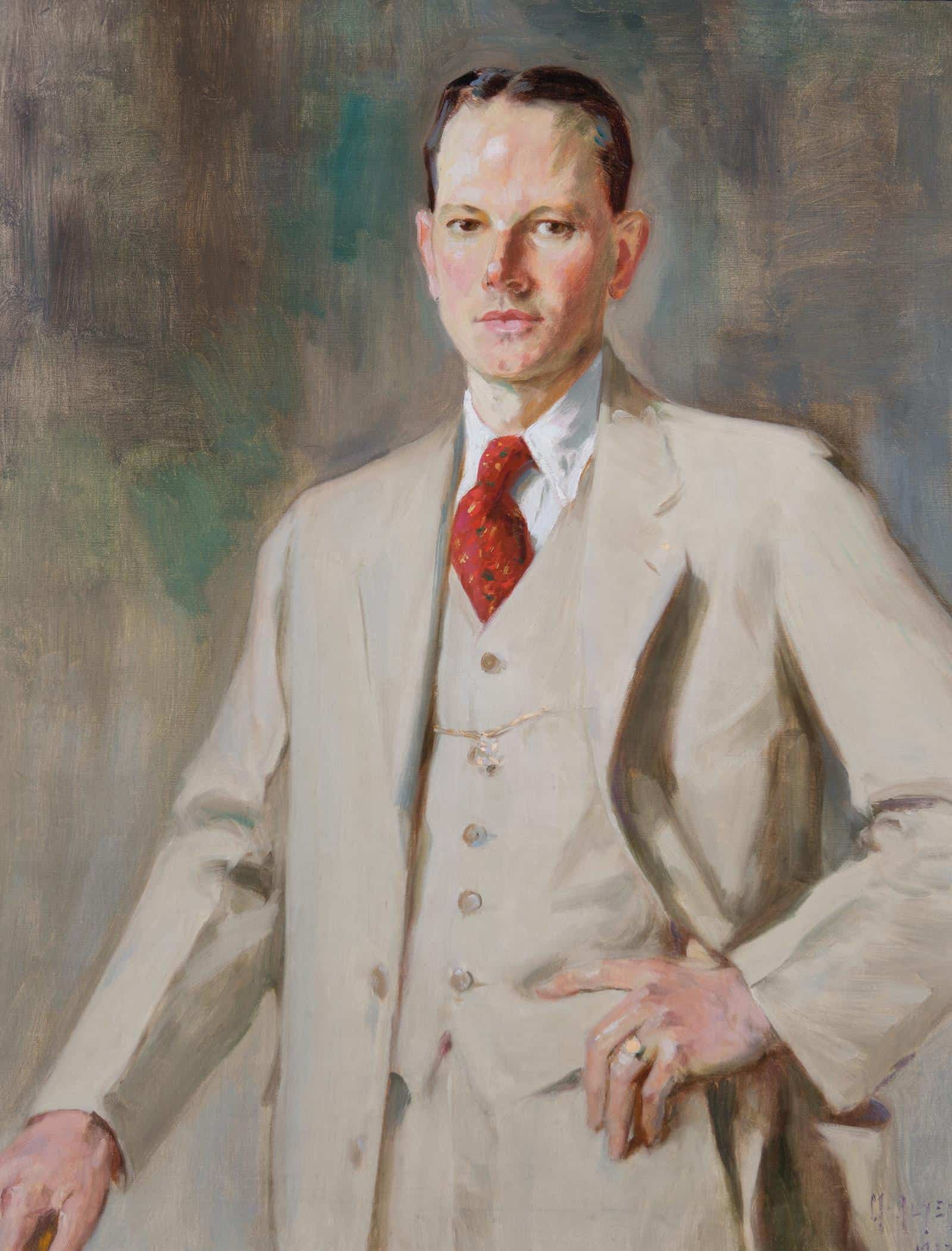
By the middle to late 19th century, the modern necktie, assuming essentially its form today, was developed, and by the 20th century, it had become the standard for neckwear and the most common type of cravat worn across the globe.
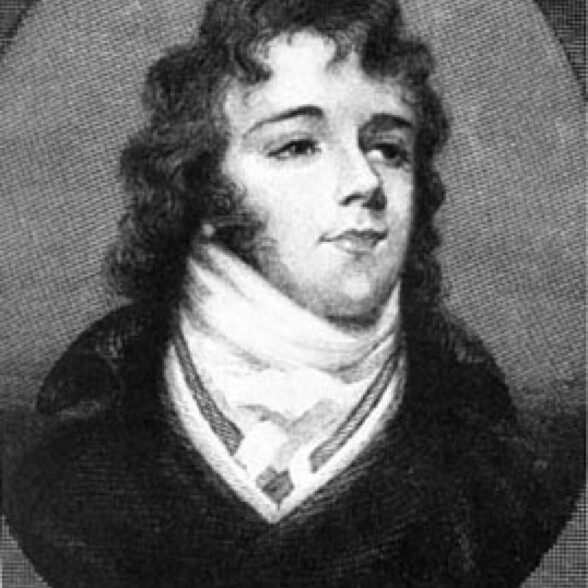
The Influence on Neckwear By
Beau Brummell
Fashion influencer Beau Brummell is known for many innovations to menswear, but one of his most noticeable accomplishments was refining and subduing neckwear. Prior to Brummell’s fashion reforms, gaudy and exuberant neckwear, often featuring massive ruffles, lace, and detailing, was the norm. Brummell helped popularized a more sedate style of neckwear, featuring a clean white neckcloth in a subdued, neat knot that would become the progenitor of modern formal neckwear.
“Necktie” in Other Languages
The word “Cravat” is derived from the French word for Croatian, Croate, and this etymology expresses itself in other languages as well. Just look at all of the words for “necktie” that can be related back to the word Croate. No wonder there is some confusion regarding the meaning of the word cravat!
| Language | Word for Necktie |
|---|---|
| French | Cravate |
| Greek | Γραβάτα (Graváta) |
| Irish | Carbhat |
| Italian | Cravatta |
| Portuguese | Gravata |
| Romanian | Cravată |
| Serbian | Кравата (Kravata) |
| Slovak | Kravata |
| Polish | Krawat |
Defining What Exactly An Ascot Is
An ascot is a neckwear accessory consisting of two long, wide wings connected by a slim band, all made of fabric. The wings are usually the same size and they constitute the decorative element of the article, while the band is intended to sit upon the neck and secure the wings.
Distinguishing Between Different Types of Neckwear
Because a cravat can refer to a variety of different neckwear accessories, it is important to note that not all of these articles will be an ascot. While other neckwear items may resemble or be visually similar to an ascot when worn, they are not ascots themselves unless they consist of two broad fabric wings conjoined by a thinner neckband.
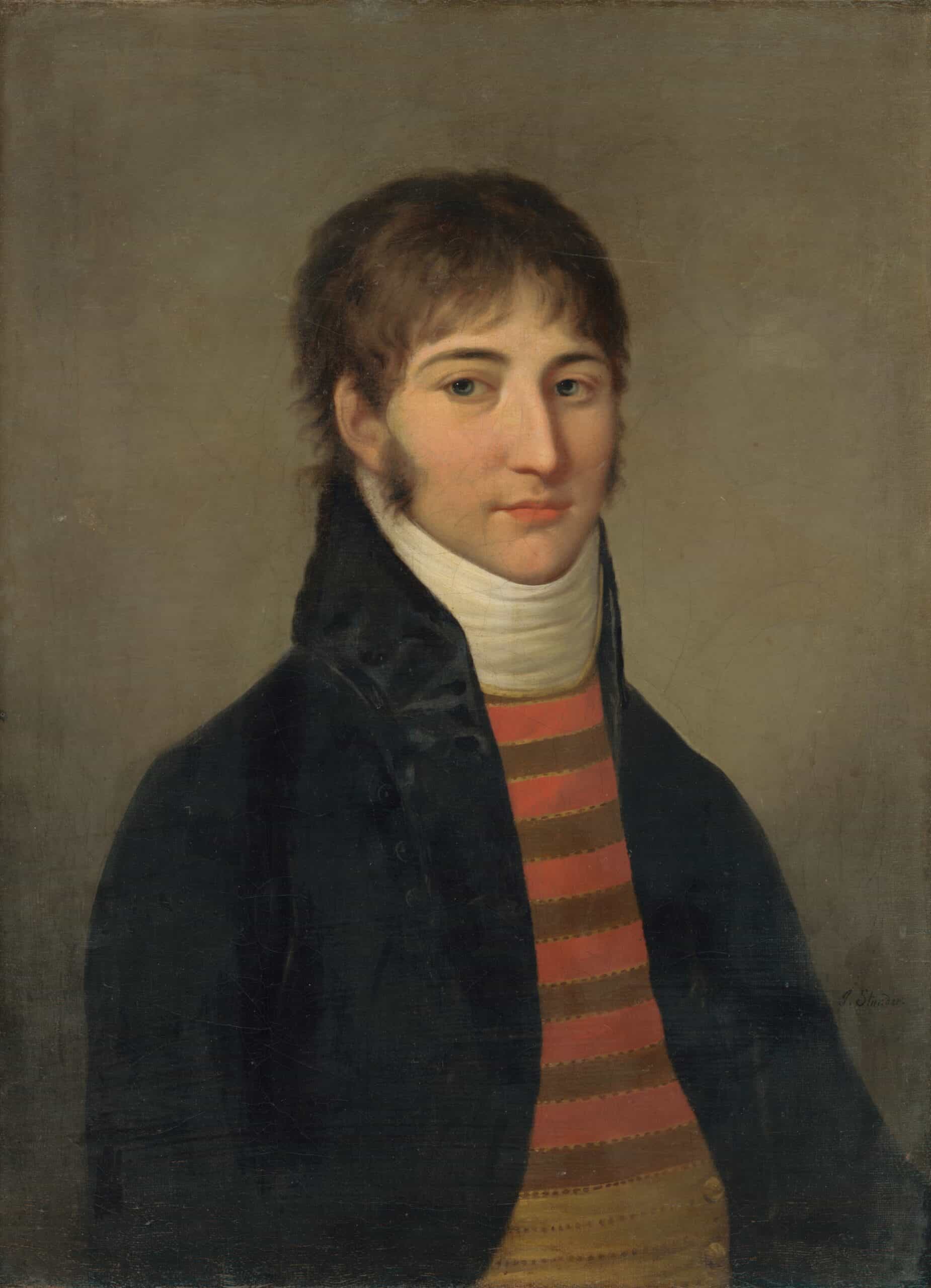
Neckcloth
One of the oldest cravats, the neckcloth consisted of a long rectangular strand of fabric wrapped or tied with a decorative knot around the neck. [Image Credit: Wikimedia.]
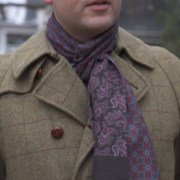
Scarf
A scarf is a long, rectangle piece of fabric often warn to insulate heat while also serving as a decorative element. Lighter scarves can also be worn purely for decoration.
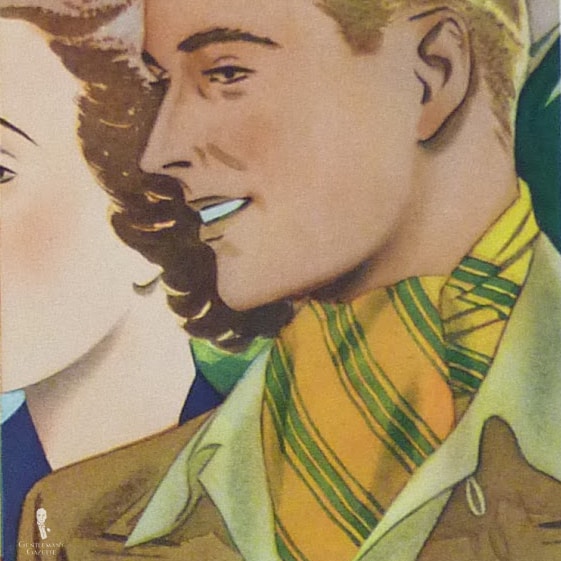
Neckerchief
A neckerchief is a casual form of neckwear created by folding a square handkerchief or pocket square into a triangle and then tying or wrapping it loosely around the neck.
A Brief History of the Ascot
The Ascot is Standardized in the 19th Century
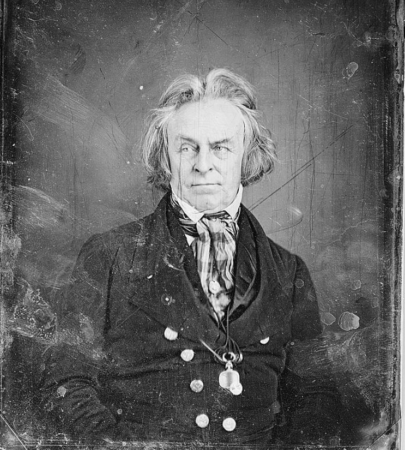
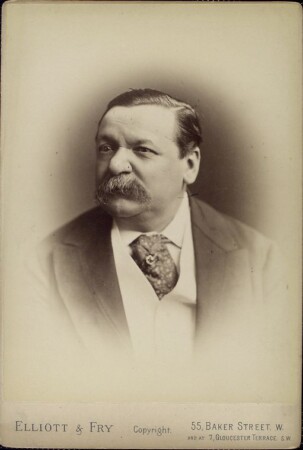
![In This Self Portrait From 1906 Artist John Singer Sargent Wears A Silver Ascot In this self portrait from 1906, artist John Singer Sargent wears a silver ascot. [Image Credit: Wikimedia.]](https://www.gentlemansgazette.com/wp-content/uploads/2022/08/In-this-self-portrait-from-1906-artist-John-Singer-Sargent-wears-a-silver-ascot-333x450.jpg)
The ascot can trace its origins to the various neckcloths that were commonplace in Europe during the 17th and 18th centuries. These early neckcloths became more standardized in the late 18th and early 19th centuries and were often made of linen and heavily starched to hold their shape.
To help the neckcloth maintain a more pleasing shape and drape throughout the day, the fabric at the ends was shaped into wings, and the section around the neck thinned to sit more comfortably. By the 1870s, ascots of this description were being made with the following dimensions:
- 50 inches in length from tip to tip
- 1-inch width at the neckband
- Wings about 3 inches wide
Eventually, these ascots developed into the form of modern ascot ties. To help keep the elegant folds of the ascot in place, a stick pin was often used.
A Race Track Lends Its Name to a Menswear Article
![A View Of The Ascot Racecourse From The Stands A view of the Ascot Racecourse from the stands. [Image Credit: Wikimedia.]](https://www.gentlemansgazette.com/wp-content/uploads/2022/08/A-view-of-the-Ascot-Racecourse-from-the-stands-840x141.jpg)
The ascot derives its name from the famous Ascot Racecourse located near Ascot Heath in Ascot, Berkshire, England. For over 300 years, Ascot has hosted the Royal Ascot Race, one of the most important and well-dressed events in sport.
To this day, the Royal Ascot is known for its extremely vigorous dress code, and the same was certainly true in the past. Gentlemen enjoying the races would have been expected to wear formal day clothes, and during the 19th century, any such ensemble would include formal neckwear of some kind.
Know exactly what to wear at the Royal Ascot!
The name “ascot” was likely appended to the neckwear because during the late 19th century, when the Royal Ascot was becoming extremely popular, the distinct neckwear was also enjoying a surge of popularity, and many of the gentlemen attending the race would have been wearing the clothing article that would come to be immortalized as the ascot.
As indicated by these circumstances, during the 19th century, the ascot was considered formal attire that could be seen on both day and evening occasions of the highest tier.
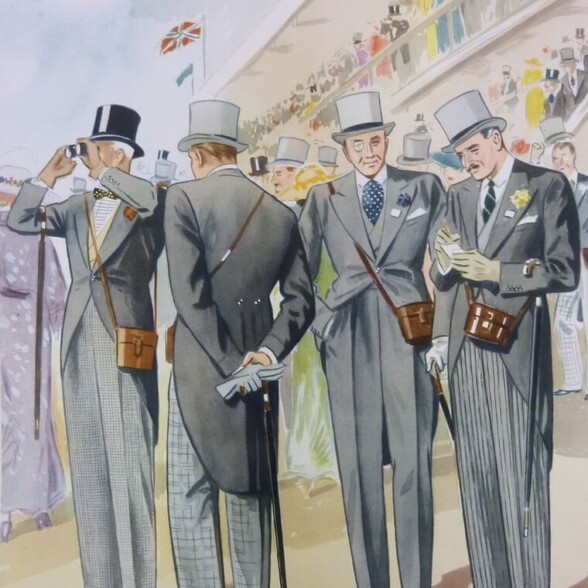
The ascot tie is banned at …
… Royal Ascot?
Believe it or not, since 2012, it has been contrary to the stated dress code to wear an ascot at the Royal Ascot Race. In the United Kingdom, the ascot is considered a more informal article than a necktie. While formal examples of the ascot do exist, they cannot always be easily distinguished from casual examples. Therefore, the leadership of the Royal Ascot has found it more expedient to simply ban all ascots rather than attempt to distinguish between what constitutes a formal or an informal example.
The Ascot Enters the 20th Century
During the 20th century, the ascot remained a common component of formal daywear attire and was regularly seen around the necks of well-dressed gentlemen at the most formal day-time events.
The Ascot is Adopted as a Casual Accessory
But around this time, more casual ways to style neckwear were coming into fashion on occasions when men did not want to wear a full necktie or bowtie but also did not wish to leave their throats bare. On these occasions, loosely knotted light scarves or neckerchiefs were worn, but soon, the ascot was also adopted for this purpose.
A more casual variant of the formal ascot, known as the day or casual ascot, was well-known by the start of the 1930s. It was favored in more relaxed situations when a necktie or bow tie could seem too formal. As such, it was often worn with a dressing gown while at home, or with a jacket, smoking jacket, blazer, vest, sweater, or even just a shirt.
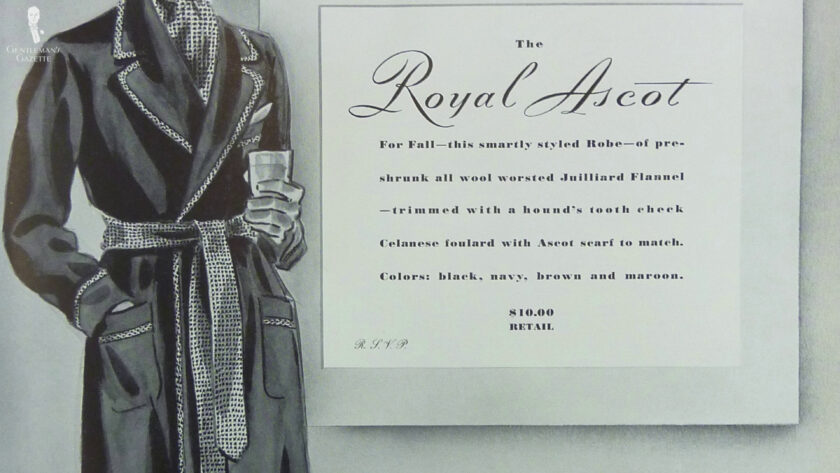
The day ascot was especially associated with leading Hollywood men, and stars like Cary Grant, Clark Gable, Tyrone Power, Dirk Bogarde, and Vincent Price often wore day ascots on and off the screen. The day ascot soon became associated with the glamourous nonchalance of Old Hollywood and was emblematic of casual personal style and a dash of early sprezzatura.
Distinguishing Between a Day and Formal Ascot
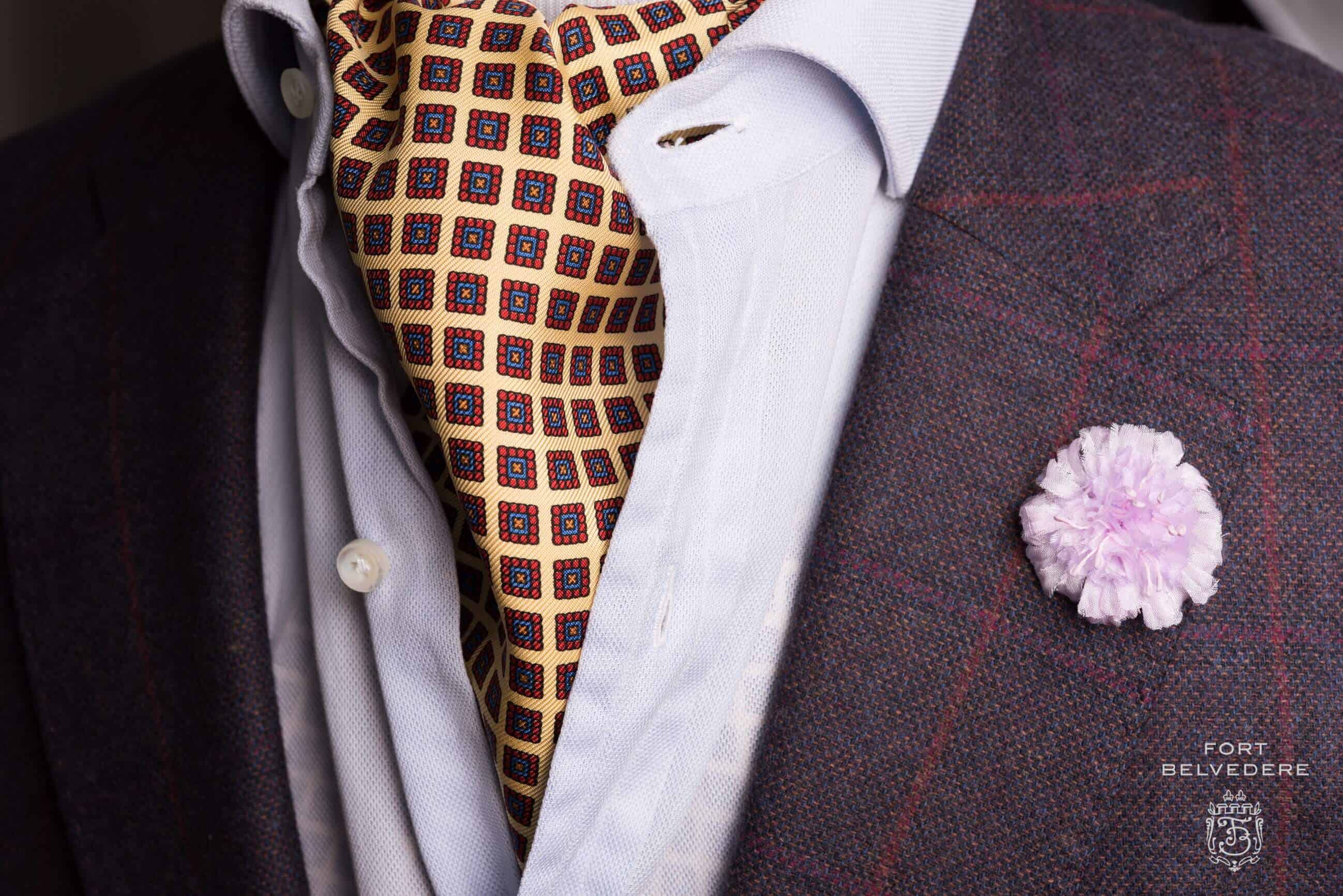

While they are very similar, three main factors distinguish a day ascot from a formal ascot. These distinctions are predicated primarily upon the formality for which each of the articles is appropriate.
Color and Pattern
The most immediate way to tell a formal from a day ascot will be the choice of color and pattern.
Formal Ascot Colors
As one might expect, a formal ascot will feature a more sedate color palette and selection of acceptable pattern styles. Traditionally formal colors like black, gray, or dark blue, red, purple, or green will naturally be acceptable, but because the formal cravat is often worn on daytime occasions as part of morning wear, additional colors, such as pastels, are also acceptable. Pale gray or silver is often considered the iconic morning wear neckwear color.
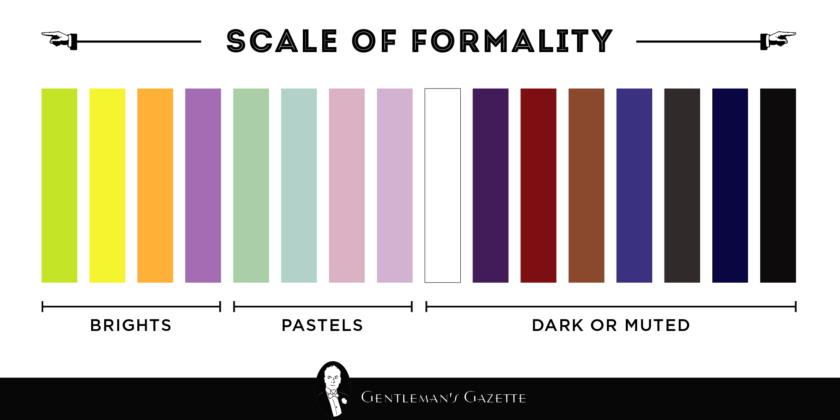
Formal Ascot Patterns
Subtle patterns such as houndstooth, herringbone, and similar micropattern are all perfectly acceptable on formal occasions.
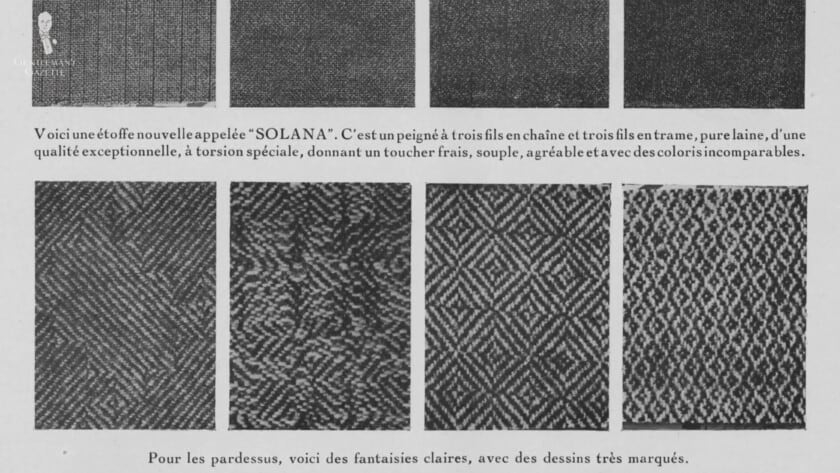
Day Ascot Colors and Patterns
Technically speaking, the casual day ascot can feature any color or pattern, although of course not every color or pattern will be appropriate for every occasion or be in keeping with the conventions of Classic Style.
Interlining
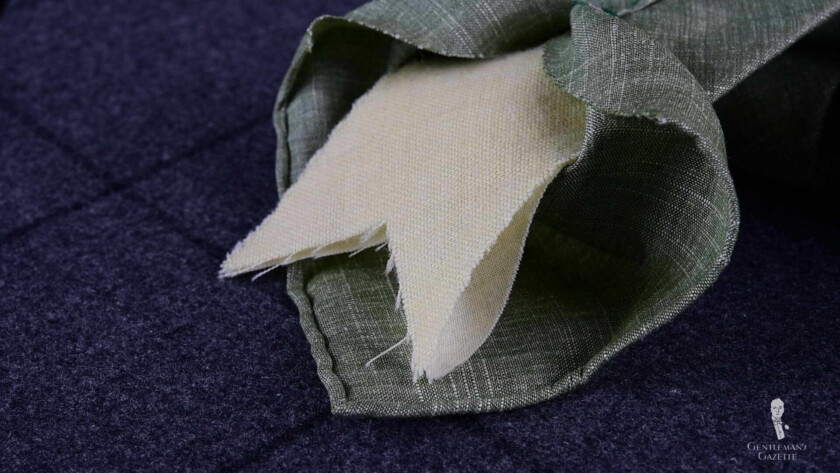
Because they are meant to be more lightweight and casual, day ascots are almost always unlined. This will often allow the day ascot to sit more comfortably on your neck and feel less restrictive. A formal ascot will generally have an interlining, as the added stiffness helps the ascot keep its shape. As a result, a formal ascot will be thicker and feel slightly heavier on the skin.
Shape
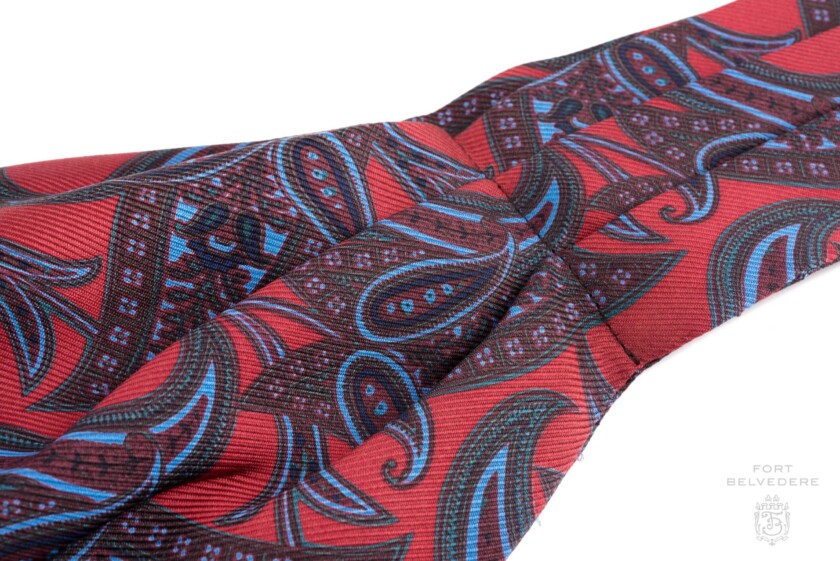
While very similar in overall construction, one factor of how the neckband is treated can immediately distinguish a formal ascot from a day ascot. On a day ascot, the band will usually have obvious pleating or ruching. This detail is intended to help the ascot stay knotted, because when the pleats overlap, they create increased resistance that helps prevents the wings of the ascot from sliding loose and causing the knot to come undone.
How to Wear a Day Ascot
Why You Should Wear a Day Ascot

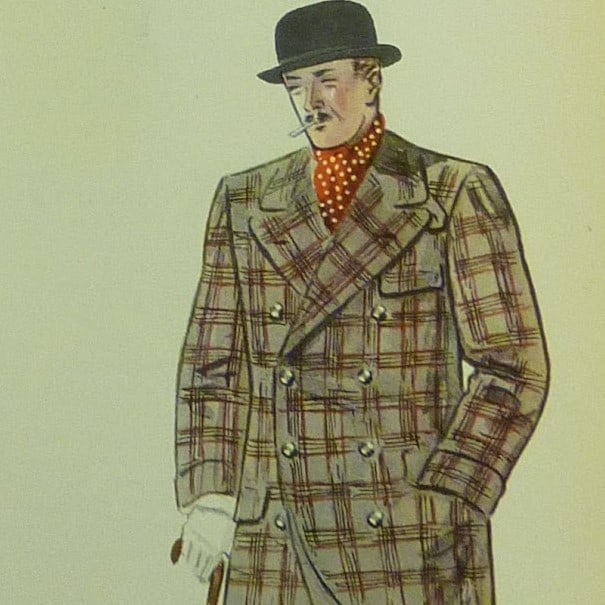
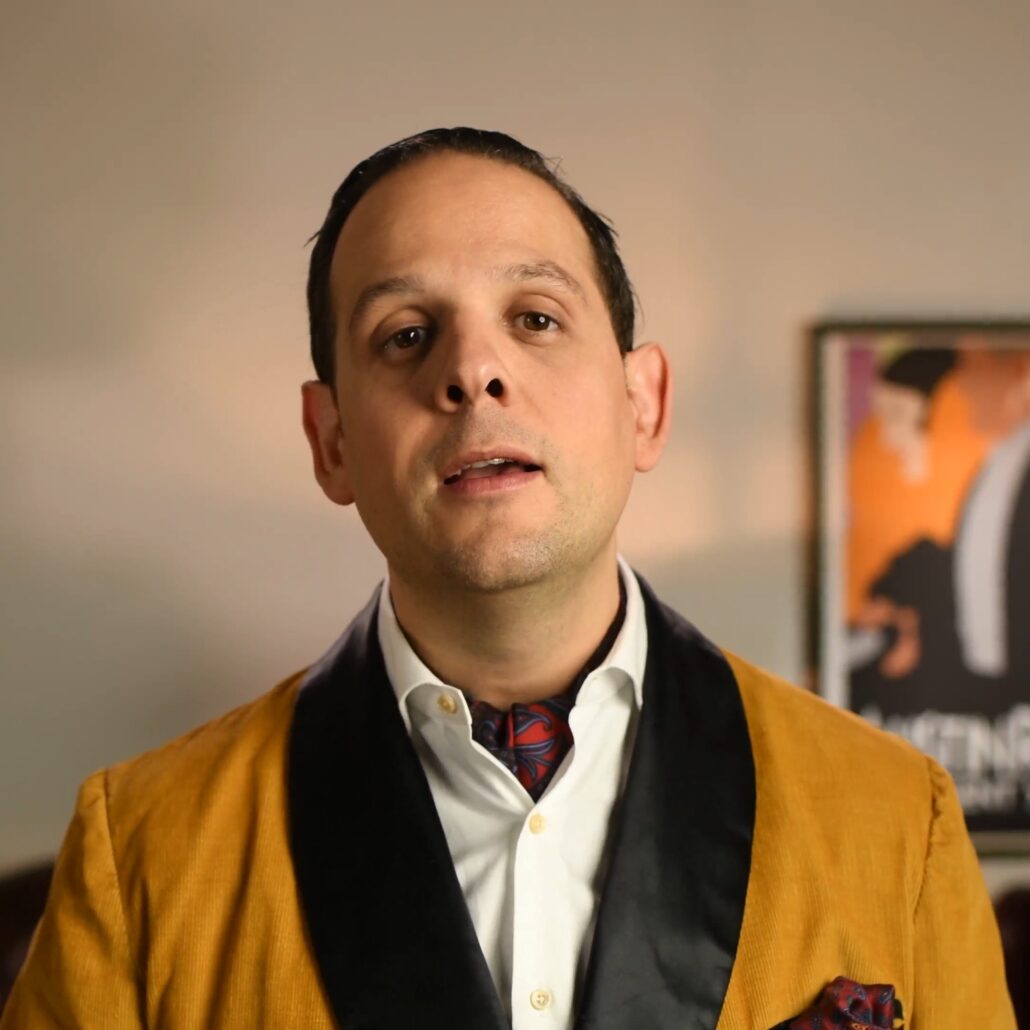
Day ascots are an excellent way to look put-together and elegant without being overly formal in an increasingly casual world. They also attract attention because of their rarity and can be a fantastic conversation starter.
Because it is worn with an open collar, a day ascot is also a great alternative if it is an especially warm day or if you do not like tight collars around your neck but do not wish to forgo neckwear entirely.
Day ascots can also effortlessly elevate any ensemble and make it appear much more dressy and, at the same time, relaxed, giving you the best of both worlds.
Where and When to Wear a Day Ascot
Day ascots can be worn on a variety of occasions and are suitable for many casual dress codes. For any outfit you might wear without a tie, you can add a day ascot to add flair to your look.
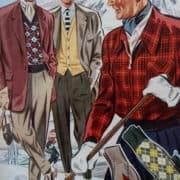
Day ascots can be used to enliven your outfit when you are out running errands and want to be a little more dressed up, when you are meeting friends for a casual lunch, or are just out and about enjoying yourself on fun excursions like visiting an art museum or strolling in the park.
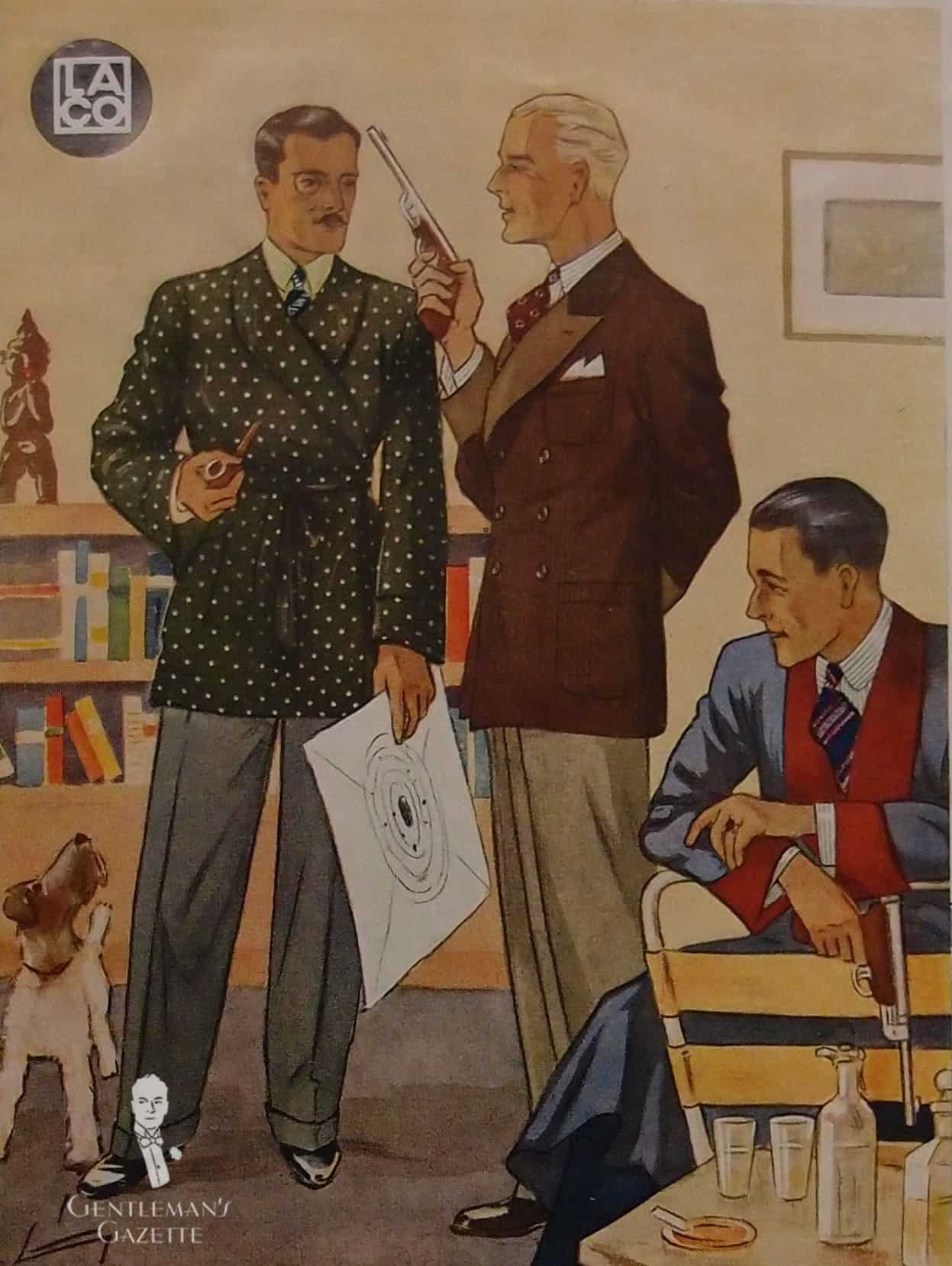
You can also wear the day ascot as a domestic article, pairing it with a house coat or smoking jacket while relaxing at home or entertaining guests. This usage harkens back to the day ascot’s glory days as the favored loungewear of Hollywood stars.
Although they are a type of cravat, day ascots are decidedly less formal than neckties or bow ties. Accordingly, while they can be worn in casual or some creative office environments, they are likely not appropriate for most formal professional business settings because of their casual style.
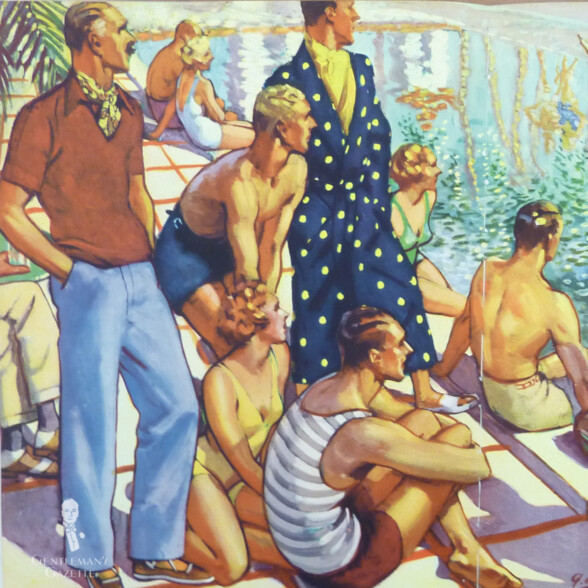
Day Ascots are a Summertime Sensation
Because they are worn with your shirt undone, day ascots allow for much greater movement of air when the weather is hot. They have therefore become a favorite accessory for warm weather and are the perfect finishing touch to a summer outfit that looks and feels as cool as possible. Perhaps this is why ascots are still favored in warm climates like Spain, Italy, and Southern France.
How To Tie a Day Ascot
A day ascot is always tied around the neck itself and worn with the body showing through the collar. A day ascot can be tied in a variety of ways, all of which are covered in our dedicated video on the subject.
Day Ascot Colors, Patterns, and Materials
Like neckties or bow ties, day ascots can come in a variety of colors, patterns, and materials to suit various occasions, situations, and dress codes. Accordingly, many of the style cues that determine which tie is right for you will also inform which day ascot is right for you.
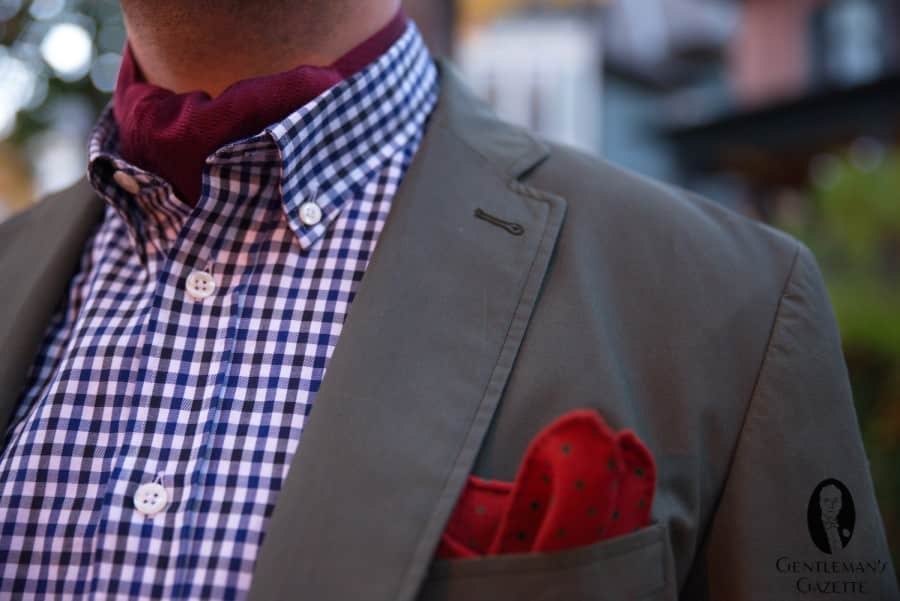

That being said, because the day ascot is a more casual and whimsical accessory, it affords an excellent opportunity to be more adventurous and experimental with your style. Do not be afraid to go bold when selecting an ascot color or pattern because the day ascot is itself a bold article.
Tips for Tip-Top Day Ascots
- Because the day ascot is worn directly against your skin, ensure that its material is soft and supple, not stiff or scratchy. Traditionally, silk ascots have been favored because they rest lightly on the skin and also help to regulate the flow of cooling air across your body. At Fort Belvedere, we give our Ascot silks a special, soft finish with gum from the original silk thread, giving the ascots a marvelous touch with a slightly chalky feel.
- Be aware that certain weaves of fabric might catch or snag on your facial hair. If you have coarse stubble or wear a beard, it might be best to wear a day ascot with a printed pattern to ensure that no threads become snagged on your facial hair. Not only will it hurt to have your hair pulled, it can also pull a thread loose on the day ascot and potentially ruin it.
- Large, bold patterns on day ascots will pair especially well with solid-color shirts or shirts with a micropattern. If you opt for a jacket, it should not be patterned so as to avoid overloading the visual elements.
- Solid patterns on day ascots provide the perfect complement to patterned shirts and jackets, as they serve as a sedate central feature that ties the entire outfit together.
- Unlike with a cummerbund, it does not matter if the pleats on your day ascot neckband are worn up or down. They are only there to help keep the knot secure.
Day Ascots to Suit Any Ensemble
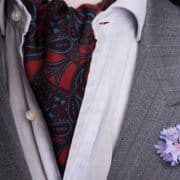
Burnt Orange Silk Ascot with Paisley Pattern
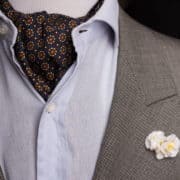
Blue Macclesfield Neats Silk Ascot
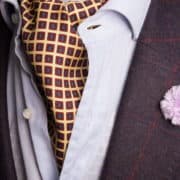
Buff Silk Ascot with Macclesfield Neats
An Example of a Day Ascot Outfit
- Ascot in madder silk with red, orange, navy, and light blue paisley
- Pink and blue checked shirt with white background
- Wine-red cardigan
- Dark navy blue trousers
- Midnight blue and burgundy shadow stripe ribbed socks
- Dark oxblood penny loafers
This outfit is intended to highlight how well a day ascot can enliven an otherwise relatively sedate ensemble. The navy and red tones of the ascot, complementing the cardigan, trousers, and shoes, tie the outfit together while providing pop with the stimulating paisley pattern.
How to Wear a Formal Ascot
Why You Should Wear a Formal Ascot
![Adolphe Menjou Wears A Formal Ascot With His Morning Wear In This Scene From A Woman Of Paris 1923 Adolphe Menjou wears a formal ascot with his morning wear in this scene from A Woman of Paris (1923). [Image Credit: United Artists]](https://www.gentlemansgazette.com/wp-content/uploads/2022/08/Adolphe-Menjou-wears-a-formal-ascot-with-his-morning-wear-in-this-scene-from-A-Woman-of-Paris-1923.png)
As menswear has become more casual, most men are presented with fewer and fewer occasions on which to wear formal daywear, especially the pinnacle of this dressing type, morning wear.
If, however, you ever find yourself presented with the opportunity to dress in morning wear, you should seriously consider the possibility of wearing a true formal ascot.
More morning wear questions? Read our guide!
The formal ascot is better suited to the broad silhouette of morning wear, and the formal cravat helps to create visual interest at the chest where, if a traditional necktie is worn, the shirt can give the appearance of excess negative space.
The formal cravat is also the perfect unique finishing touch to the unique morning wear style, which has become such a rarity today and thus benefits from an unusual highlight like a formal cravat.
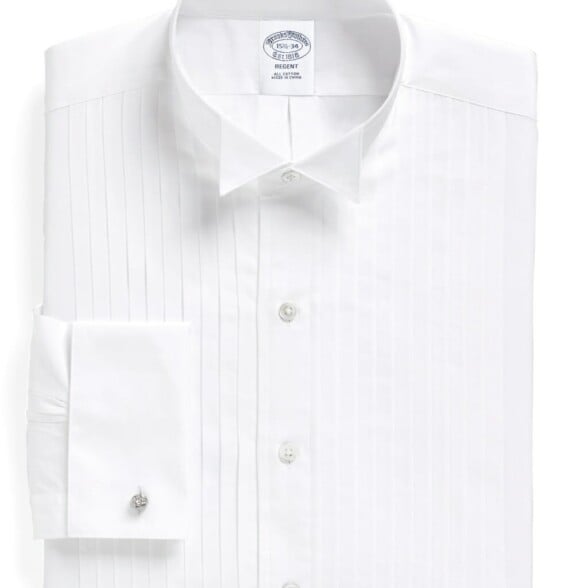
Take wing with a
Wing Collar
For the most formal and dashing look, consider pairing your formal ascot with a winged collar shirt. The thicker neckband of the formal ascot looks especially pleasing when exposed, and the wings of the collar will help draw attention to and provide adequate visual space to highlight the unexpected knot and body of a formal cravat.
Where and When to Wear a Formal Ascot
Although closely associated with the morning wear dress code, a formal cravat can be worn for any day occasion that calls for formal wear. Formal daytime events, such as garden parties, religious ceremonies, lunches, tea parties, and similar occasions could all be wonderful opportunities to wear a formal day ascot. Daytime weddings are today the most common occasion for which you might be able to wear morning wear and a formal ascot.
Be aware, however, that the formal ascot is something of an unusual accessory in the modern age and could prove to be something of a distraction to others. Therefore, depending upon the formality and solemnity of the occasion, you may prefer to wear an extremely sedate and unassuming formal ascot or dispense with wearing one at all.
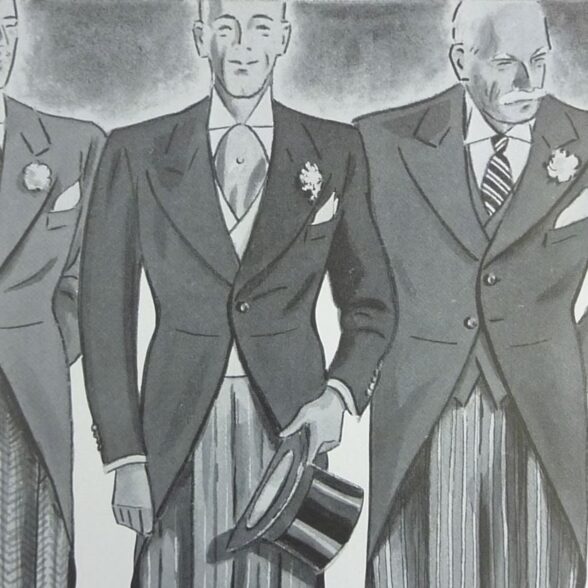
A special consideration for
Weddings
If your invitation specifically identifies the dress code as morning wear, you can wear a formal cravat without concern. If the wedding dress code is listed as Formal or any other dress code, it may behoove you to err on the side of caution and not wear a formal ascot. For any dress code other than Morning Dress, you may be the only person wearing a formal ascot. As a wedding guest, you never want to risk drawing undue attention to yourself.
How to Tie a Formal Ascot
Nowadays, there are two primary methods for tying a formal ascot: the Contemporary Knot and the Traditional Knot. You can learn how to tie both in our dedicated guide to tying formal ascots.
The Contemporary Knot
In function and appearance, the Contemporary Knot very closely resembles a four-in-hand necktie knot. It is set apart by the broader wing and the unique ruched effect on the knot. The Contemporary Knot is especially favored at weddings because it is unique without being obtrusive. If you are new to formal ascots and prefer a more subdued look, the Contemporary Knot could be ideal for you.
The Traditional Knot
A direct descendent of the original ascot knot, the Traditional Knot has an unexpected, historic charm to it that always attracts attention. The knot utilizes both wings of the cravat to achieve a plush, layered effect that is most becoming but requires the use of a stick pin to hold everything in place. The Traditional Knot is more difficult to achieve and more attention-grabbing than the Contemporary Knot, but if it is in keeping with your personal style it is an exceptional option for formal ascots, especially if you love the debonair look of the early 20th century.
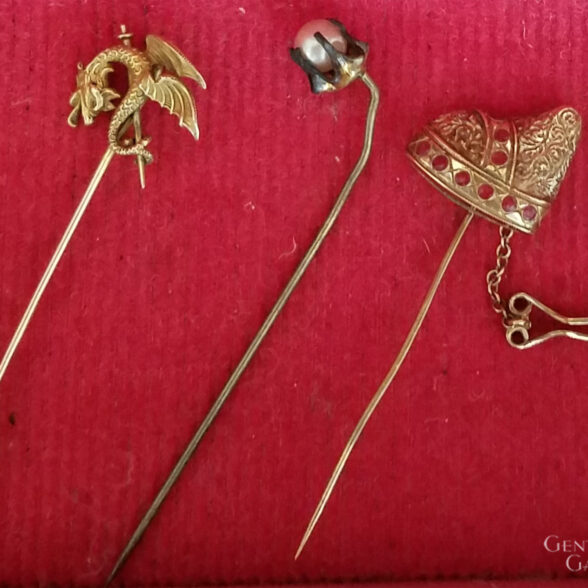
Stick Pins
A stick pin is a historic piece of men’s jewelry consisting of a long, thin body with a sharp point at one end and a decorative element at the other. Stick pins could be used for a variety of purposes, but today we are highlighting their role in keeping all of the elements of a formal ascot knotted traditionally in place. The stick pin passes through both wings of the ascot, holding them in place, and then enters the shirt, ensuring that the entire ascot stays in place. Stick pins can feature a variety of fun and interesting decorative elements, and you can often find them for sale secondhand online or in vintage shops.
An Example of a Formal Ascot Outfit
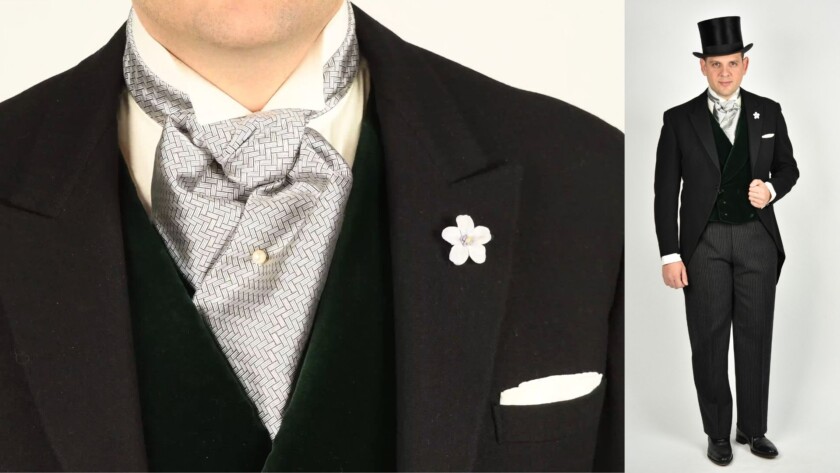
- Black top hat
- Formal ascot in silver black basket weave jacquard silk
- Wing-collar shirt
- Boutonniere
- Linen pocket square
- Dark green velvet double-breasted waistcoat
- Morning coat
- Formal day trousers
- Black leather oxfords
This ensemble is a perfect example of a well-executed morning wear look. Like all formal dress codes, the true refinement of morning wear comes in perfectly realizing all of the fine details, and a quality formal ascot is a detail that you do not want to overlook.
Are Ascots Out of Fashion? No!
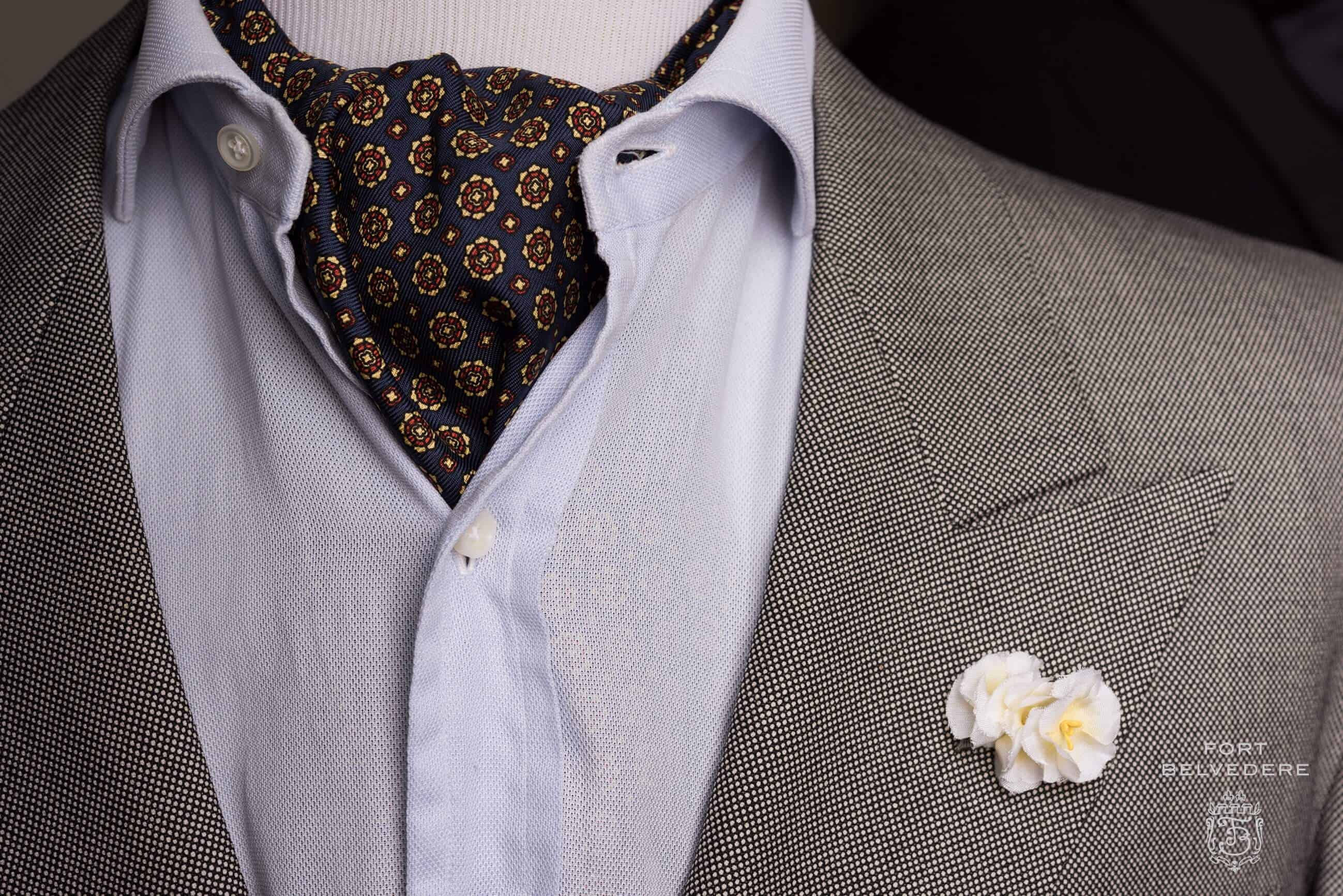
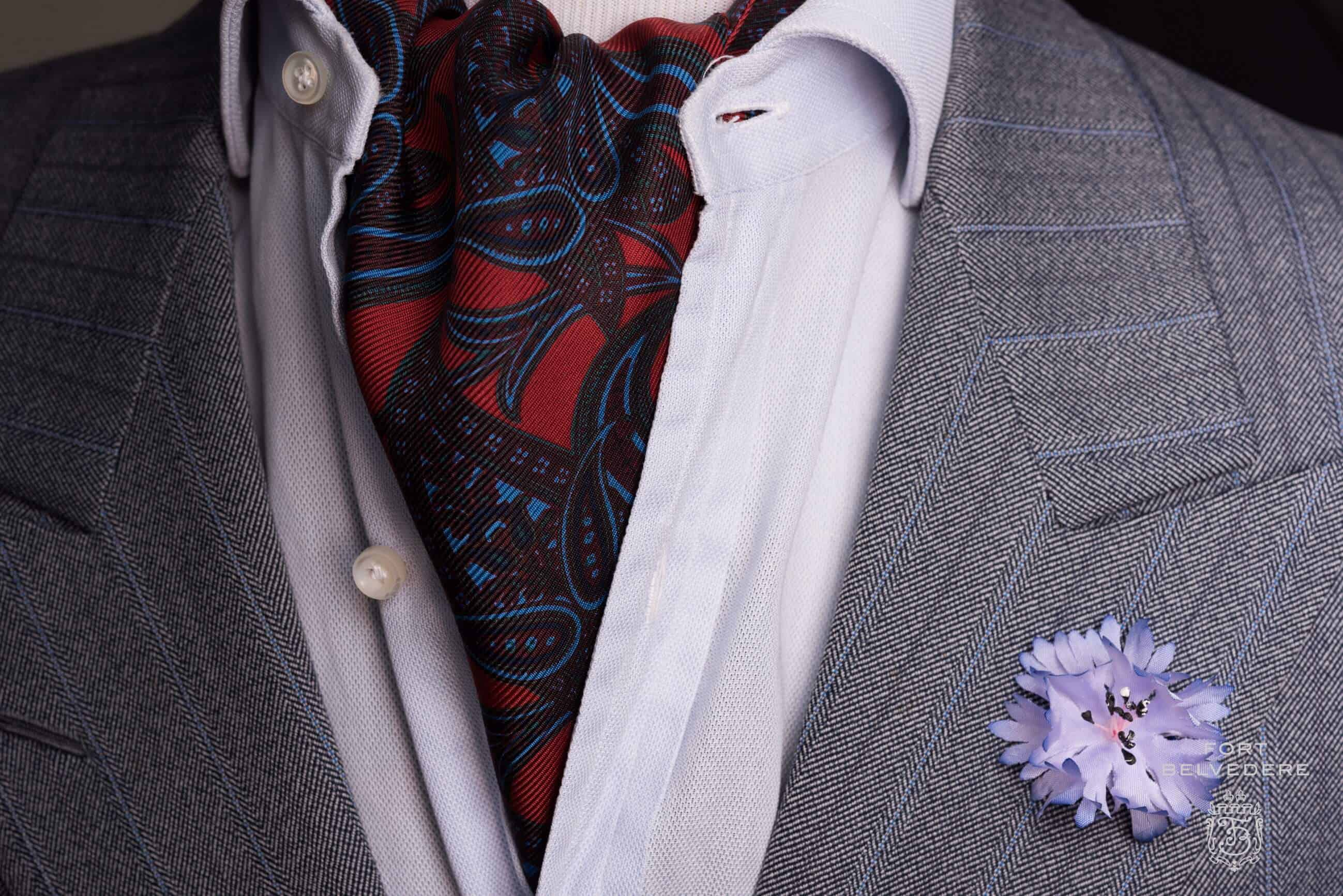

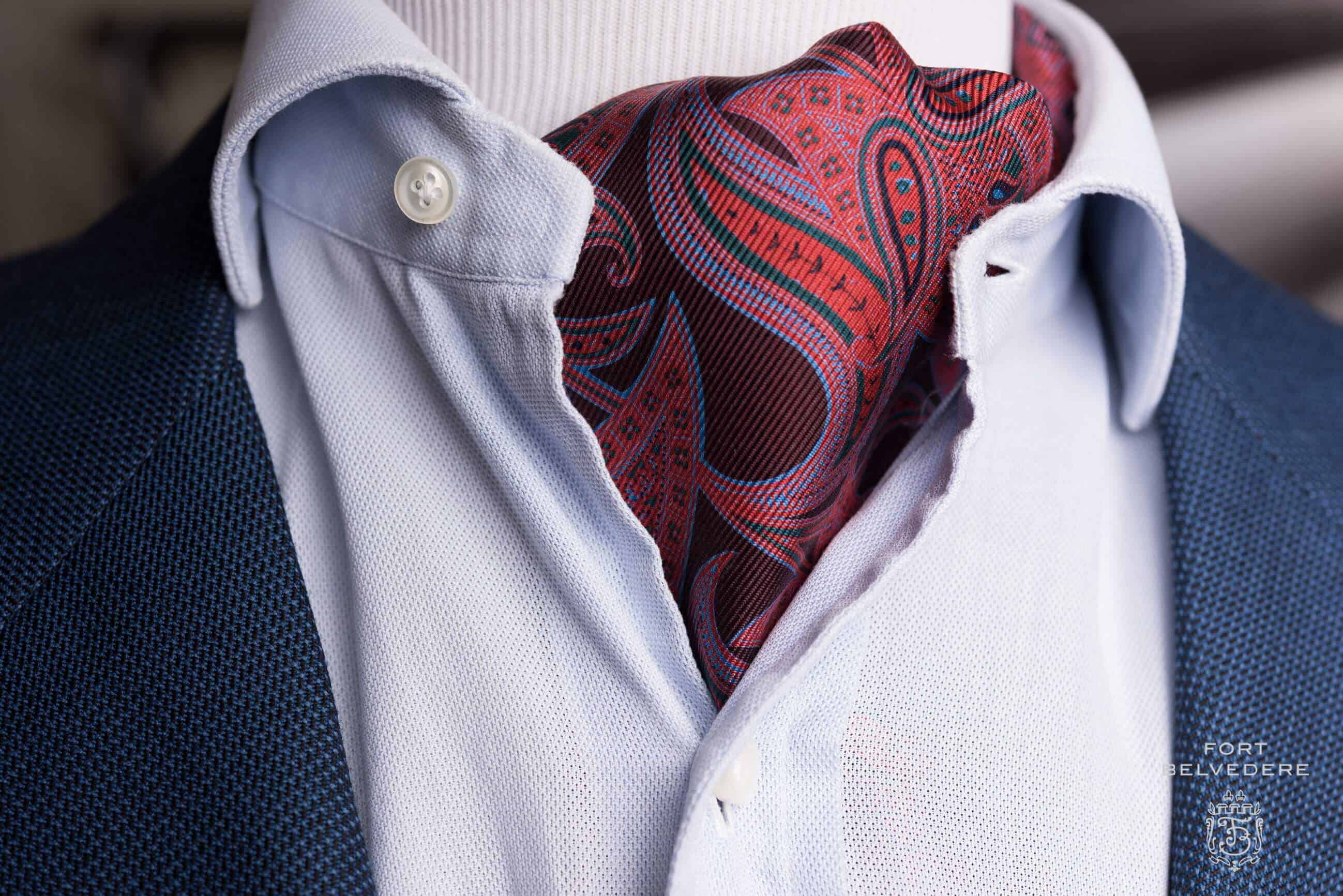
Ascots have changed and evolved considerably through their long history, and while it is true that they are not as popular as they once were, ascots remain a fascinating and fun menswear article that still have a place in the wardrobe of every gentleman of style.
Do not be afraid to wear an ascot with your outfits because you are afraid of looking vintage or dated. With the tips in this guide, you have learned how to perfectly execute a contemporary ascot look that remains cool and classic.
Conclusion
Whether you are wearing a day ascot while rambling through town with friends or a formal ascot while cheering on your horse at the Kentucky Derby, we hope that this guide has given you the confidence to wear your ascot with grace and style no matter the circumstances.
Ascot & Cravat FAQ
What is an ascot?
An ascot is a type of neckwear that consists of two wings of wide, pointed fabric, usually of the same size, with a connecting strip
What is a cravat?
A cravat is any type of neckwear worn for decorative purposes. Therefore, neckties, bow ties, scarves, ascots, and many more articles are all cravats.
Can the meaning of ascot and cravat change?
Yes, it can. In the United Kingdom, for instance, the term cravat is often used to refer to an ascot.
Are there multiple types of ascots?
Yes, there are. A day ascot is more casual and is designed to be worn around your neck and protruding through your open collar. A formal ascot is more formal and designed to be worn around the collar like a necktie.
What is the purpose of a day ascot?
A day ascot serves as a unique decorative element at the neck when you do not want to wear a necktie or bow tie but do not want to eschew neckwear entirely. Ascots are an excellent way to add panache to any casual ensemble.
What is the purpose of a formal ascot?
A formal ascot is a more traditional piece of neckwear that can be worn with formal day ensembles, such as morning wear, in lieu of a necktie.
When should you wear a day ascot?
Whenever you are wearing a casual outfit and you want to add just a touch of unexpected visual interest and class. Day ascots are especially popular in the warm months.
Can you wear an ascot with any shirt?
Ascots should always be worn with long-sleeve shirts that feature collars. A day ascot can be worn with any such shirt, while a formal ascot looks best with a more formal shirt with a wing collar.
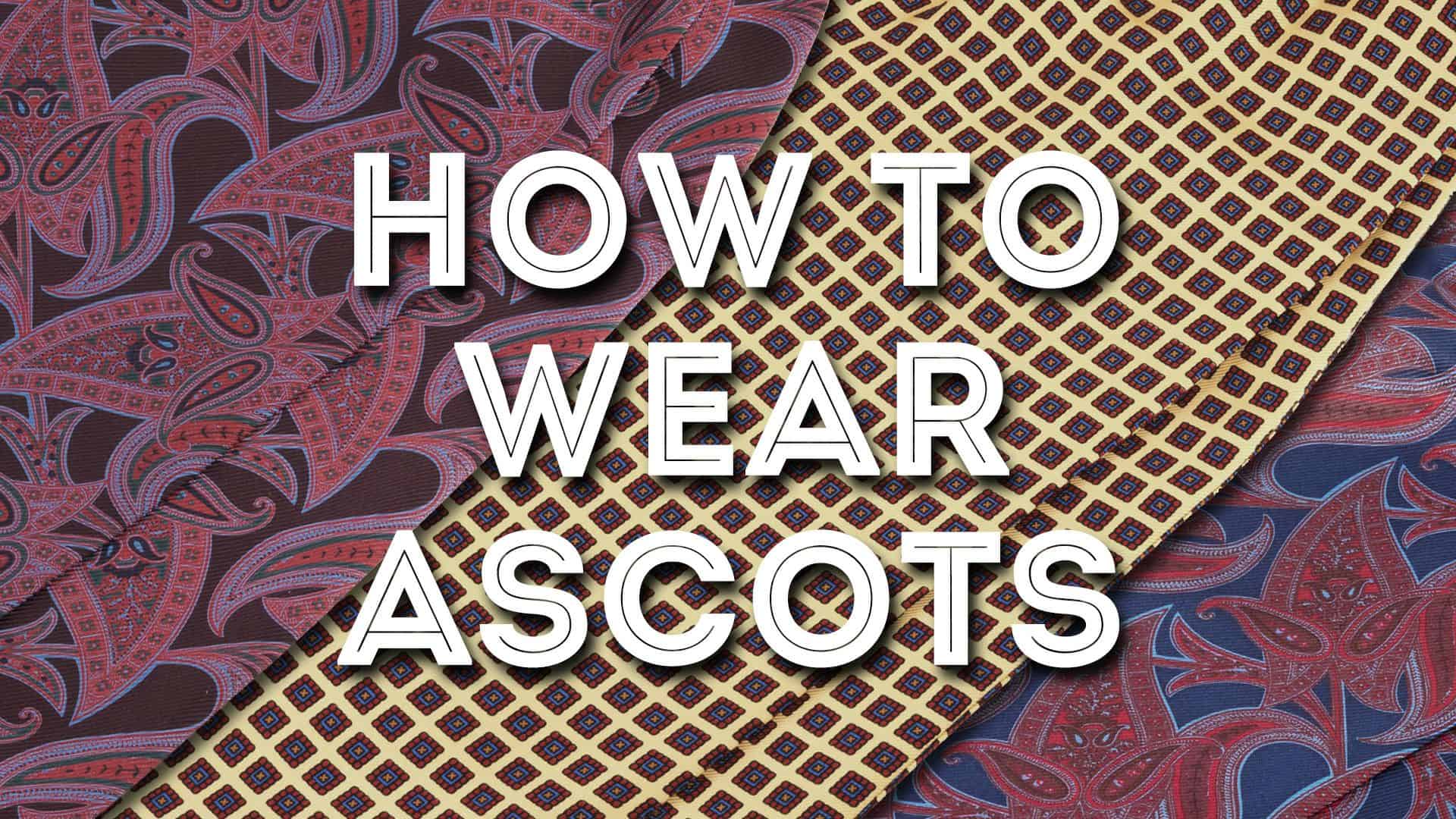

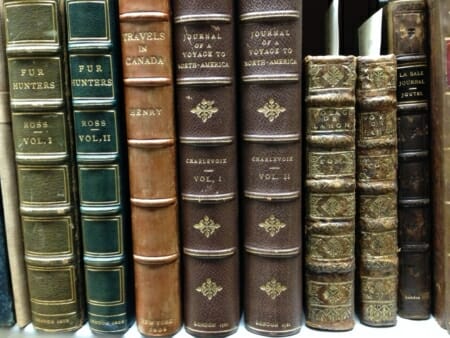


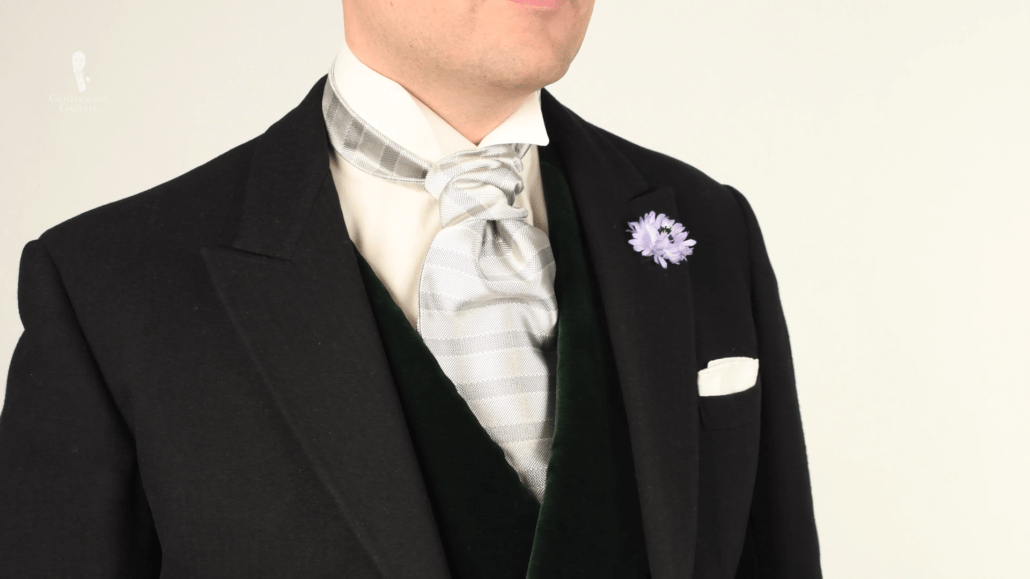
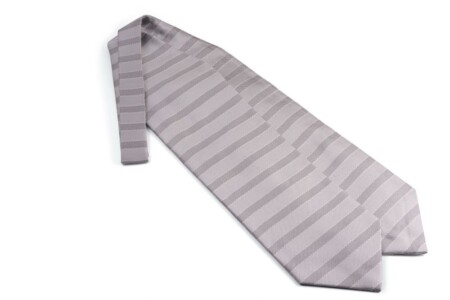
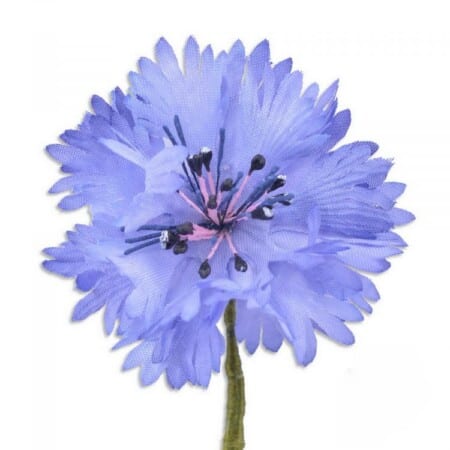
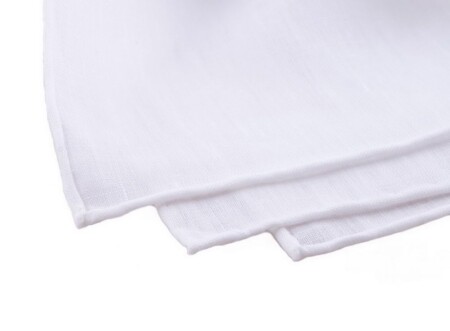
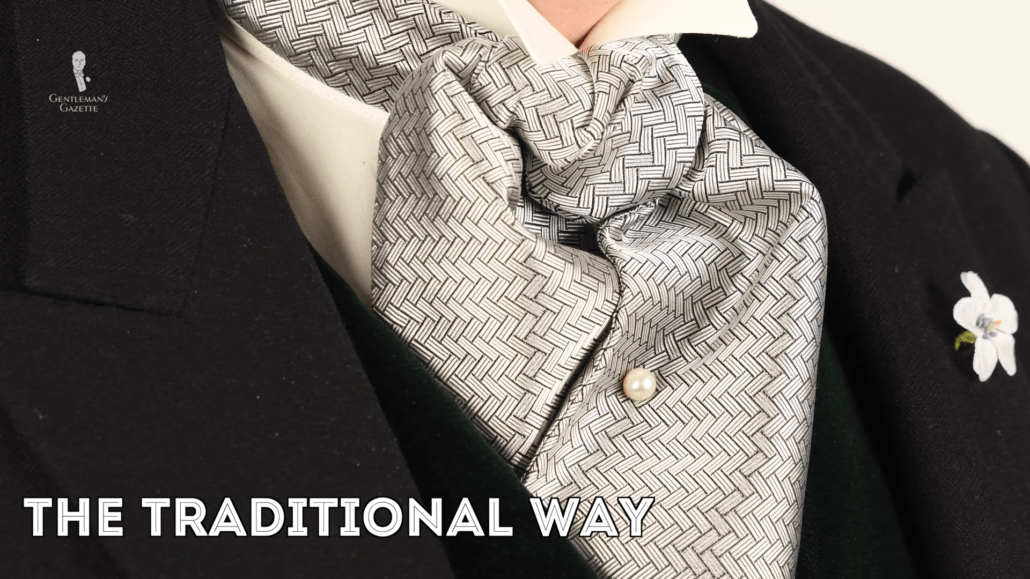
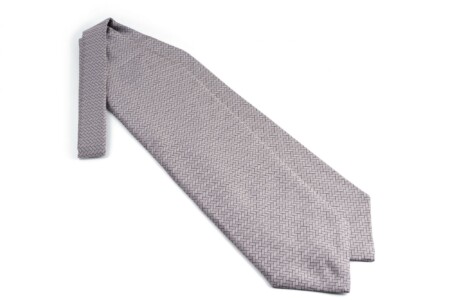
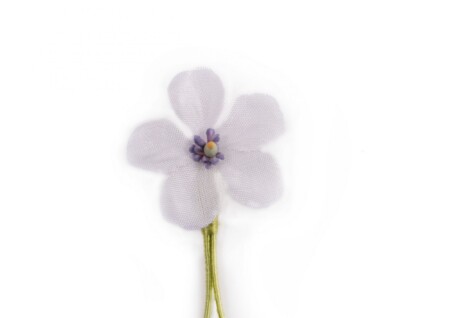
“The one I’m wearing here right now is made of ancient madder silk from England. It has this wonderful, soft and I’m sure you will love it too.”
You have left a word out here, Raf.
In my part of the world Australia these have never really taken off and more is the pity . They can make a man look sharp and very relaxed and women really like them .
I have a couple stuck in a draw , must get them out .
For those of you that have a favourite shirt ( worn tucked in not tucked out ) this is the way to give it a lift . So at your next summer after for drinks don your new neck piece .
I seldom see ascots here in the S.F. Bay Area, which considers itself a fashion leader, among other conceits. I wear mine on occasion, especially when flying – as you say, Sven more casual than a tie but dressier than an open collar. I see them in men’s stores in Canada, and when I was working with the Royal Navy some officers occasionally wore them ashore with civilian dress. Thanks for an informative article!
Hello Gentlemen, and young fellows. When and wear not to wear red linen slacks in public ? Thank you . I wish for the World a great day. Dr. Mandandi, haberdasher Thomas Jones.
I wear casual ascots sometimes, but just love the look of a proper formal ascot tie with a wing collar. As much as I’d like to wear that look with my morning coat ensemble, I just can’t help but feel it’s a little bit dated and maybe even historical costume at this point. For all practical purposes, I like the fact I can wear my “wedding ties” for morning wear and silver-grey houndstooth bow tie (for stroller only) with everyday outfits as well. I can justify the cost of this stuff since I wear it a good deal, but I can’t really justify the cost of a formal ascot if it only gets worn a handful of times. Some people would also argue that a detachable wing collar should only really be worn for white tie. The fact that many rental shops were giving out inferior ascot/pocket square combos (usually matching too) has really lowered peoples’ opinion on the formal ascot as well. Not to mention the 2012 ban. I completely agree with your treatment of the subject (and love the look when done correctly), but I feel that the formal ascot is too much of a grey/unsafe area these days due to differing opinions on the subject, and even the fact the look has been done badly for so long. I even asked around and the general consensus was that formal ascots have had their day. The opinion that stuck with me was “they’re fine for historical TV shows, but not for anything else.” From what I’ve seen, the general consensus for the “correct” way to pull off morning dress these days is turndown collar with long tie (regular necktie). Personally, I only ever don a “wedding tie” with morning wear, but some people would say that’s a bit extreme these days. As much as I believe tradition is important with morning wear, we’ve definitely seen it evolve into more modern forms in the last decade or so, with banning of ascots, bow-ties and introduction of navy morning wear into the Royal Enclosure. Ultimately, it’s your choice and if you want to pull off the lovely traditional look with formal ascot, all the more power to you.
Thanks again for the informative content. There was some stuff in your ascot video that was completely new for me.